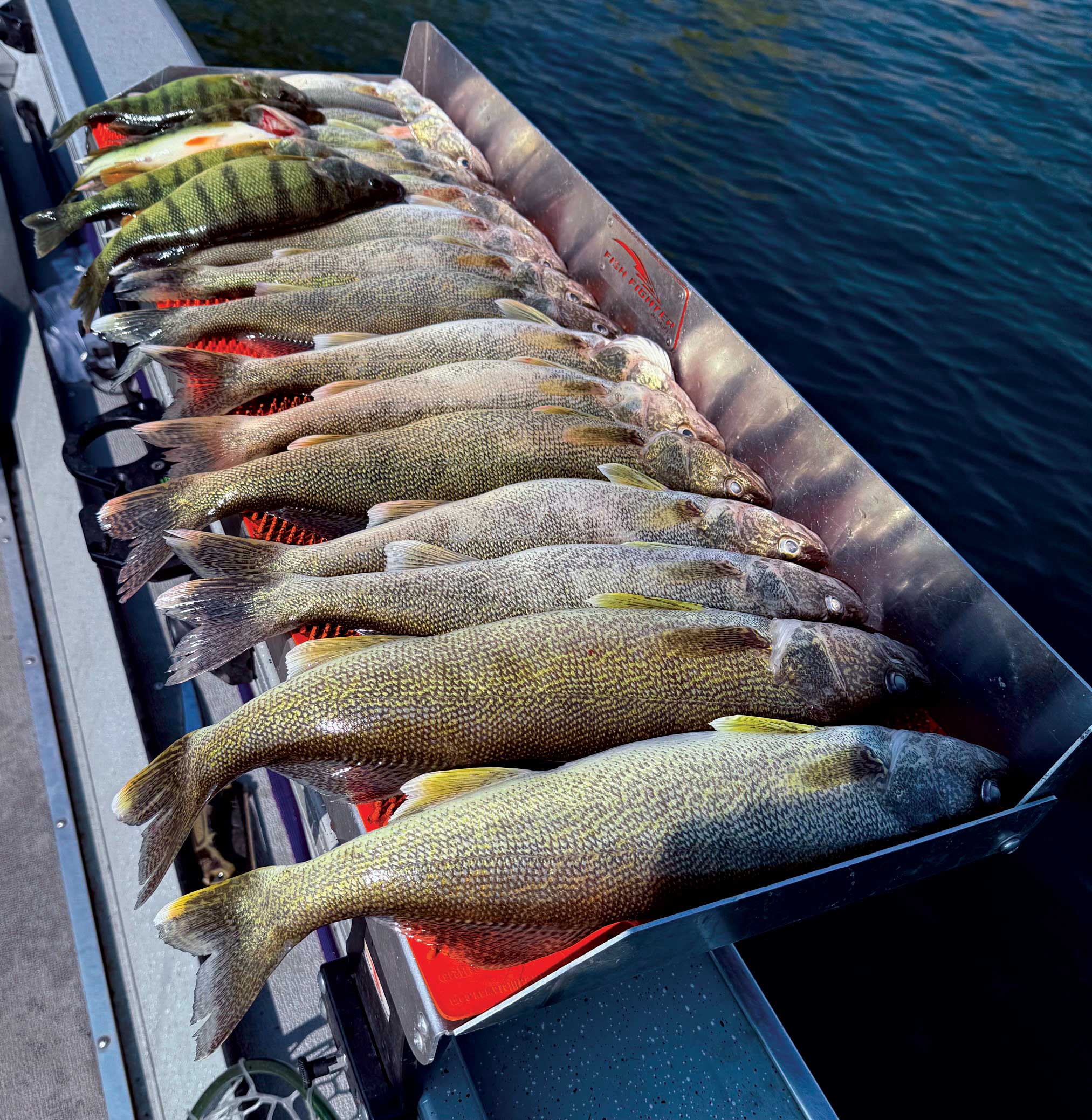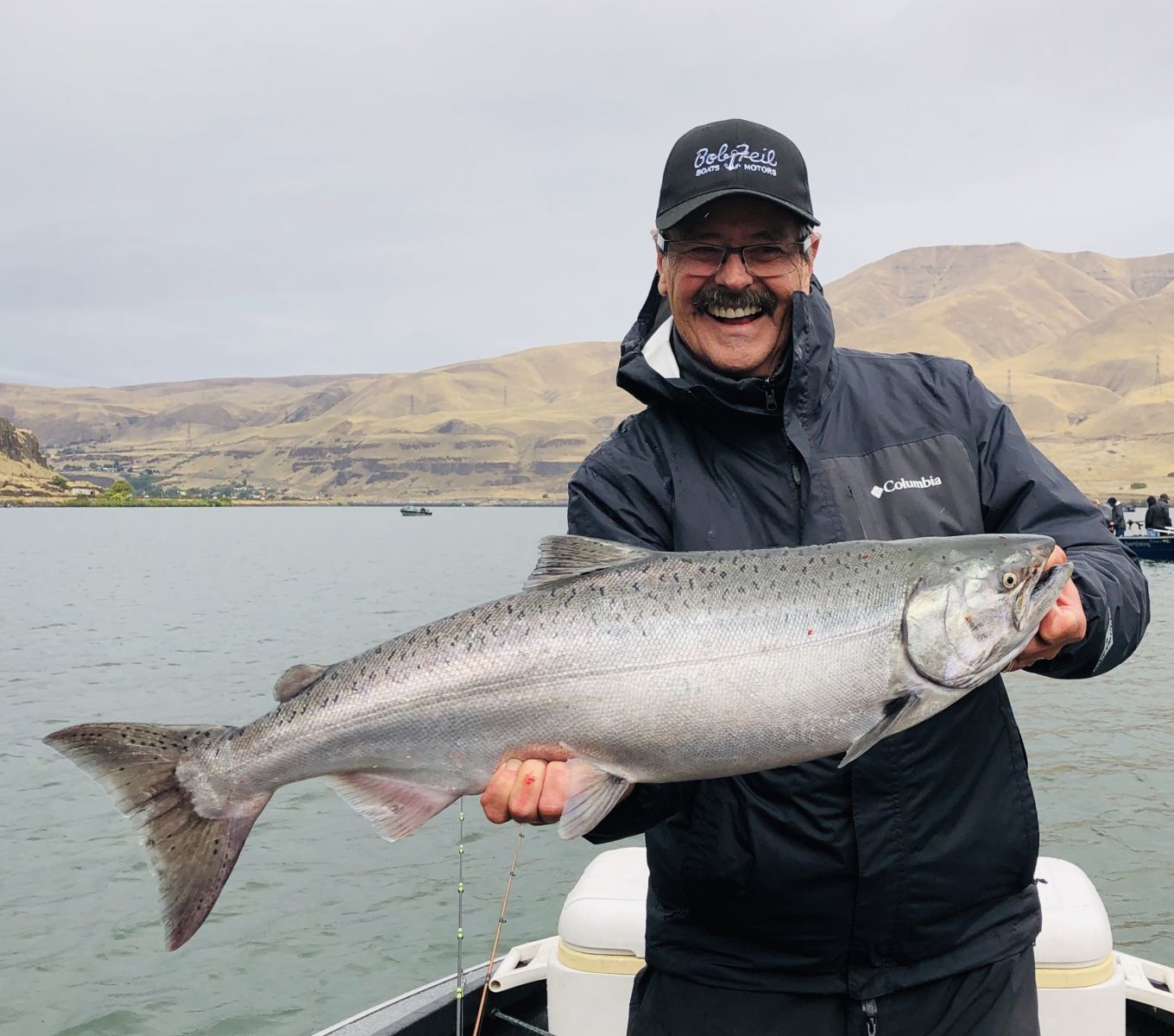The weather is on a cooling trend and that is good news for many fisheries. The walleye will be transitioning to their favorite fall locations, and the trout bite will improve on our area’s lakes. This is also a good time to fish for spiny ray species on many of the lakes in the region.
I have mentioned that this is a good time of year to fish for crappie, bluegill and perch at many of our area’s lakes. I am getting reports about terrific fishing for crappie, particularly at Potholes Reservoir. There are folks anchoring near some of the habitat boxes and casting bait to the bottom or under bobbers to the fish that are concentrated near these structures. Others are trolling smaller Flicker Shad crank baits and having a blast. Not only are the crappie attacking these lures, but huge bluegill are also hitting them along with smallmouth bass. No matter what technique you use, expect to do a lot of sorting. Most of the crappie are under the 9-inch minimum size requirement. There is no size requirement for bluegill. The daily limit is up to 25 bluegill and crappie combined. Don’t be surprised if you hook a whopper rainbow while trolling Flicker Shads. I should mention that the water level on Potholes is still very low. You need to be very cautious using most of the launches. I have also talked about how I want to get to Blue Lake, near Soap Lake, for perch, but according to one of my sources, who fished there recently, the water is still warm, and the perch are scattered. I will try it in a couple of weeks. Everyone is hoping that the walleye fishing on Potholes Reservoir will pick up this fall. In years past, this reservoir has provided excellent action in the cooler months. Not only can the walleye bite be good, but there are also some very nice fish landed. I have usually found good numbers in the area up lake from the State Park, trolling bottom bouncers and spinners over the changing depths of the rolling submerged dunes between the west shore and the mouth of Crab Creek.
If you are wondering how the early fall fishing for walleye is going on Banks Lake, I am happy to tell you it’s great! I fished Banks last Tuesday with Nate Stull, of Stully’s Guide Service, and we had a great time. We started on Barker Flats and got off to a slow start in the early morning, but after an hour or so things changed dramatically. The walleye decided to go on the bite and there were times when we couldn’t keep four rods in the water. We were landing walleye that ranged in size from about 13 inches up to 19 inches. We got a bunch of perch, too, some of them were large enough to go in the live well. We also got smallmouth bass, and some of these were big, too. After a couple of hours, we were getting close to our limits and Nate wanted to give a spot in Devil’s Lake a try. I am sure glad he did. We landed the rest of our limits pretty quickly including a couple of 19 and 20 inchers. Nate likes to troll bottom bouncers and spinners this time of year. We fished from roughly 20 feet deep to around 30 feet deep on Barker Flats, looking for fish. He said that the walleye are transitioning from their summer areas to deeper water as temperatures cool down. They are going to be following the feed. I did a video of our morning at Banks, and Nate explained in detail how he fishes for walleye in the fall. The video is available on the Dave Graybill YouTube channel. This week’s photo is our catch of walleye from that day. We even kept some of the bigger perch, and they were delicious.
There are a couple of other options available to anglers that promise very good action and impressive catches. Rufus Woods Reservoir is producing triploid rainbow trout that often weigh 5 or 6 pounds and, as many anglers know, some fish much larger than that. I have been in a rush to get my fish the last couple of trips to Rufus, so I just fished bait on the bottom. I was doing combo trips from Rufus to Banks Lake, and this is a fast way to get our two-fish limits. When I have no other plans to fish elsewhere, I like to fish jigs. I have caught big fish on 1/8th ounce olive-colored jigs and watermelon-colored grubs, like the ones you would use for bass. Fishing with the jigs allows me to catch and release. If you are using bait on Rufus Woods, you have to keep every fish you land. I much prefer to fish during the week, as there is usually some current. The low current on the weekends makes the fishing slower, but you can still catch fish.
Here is the latest about the changes planned for the Vernita Bridge Access site: The Vernita Bridge Water Access Area, a popular spot for fall fishing on the Columbia River, is undergoing changes to improve safety and preserve its natural resources. The Washington Department of Fish and Wildlife (WDFW) plans to phase out overnight camping at Vernita by October 16, 2025, and transition to a day-use only site by 2026. The department is working on developing an improved boat launch, restroom and parking area. Mike Livingston, WDFW South Central Region 3 director, emphasized the site’s importance, saying, “WDFW understands the importance of this fishery both locally and regionally and is committed to providing public access in the area for anglers.” In recent years, the site’s usage has become unsustainable due to the lack of sanitation facilities and environmental damage. Currently, camping is limited to 14 days per user in a 30 day period during the fall salmon season, which runs from August 16 to October 15. Outside of this period, camping is prohibited, and vehicle access will be restricted to a smaller day-use area. Alternative camping options are available nearby, including Desert Aire RV Park and Jackson Creek Fish Camp in Mattawa.



